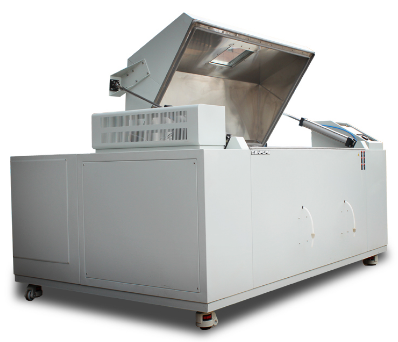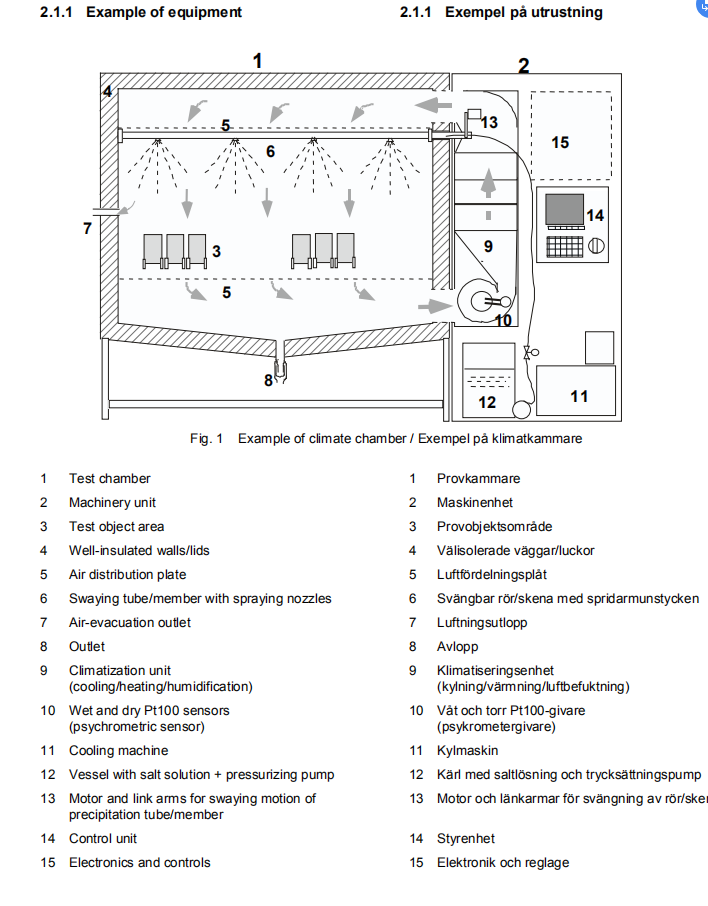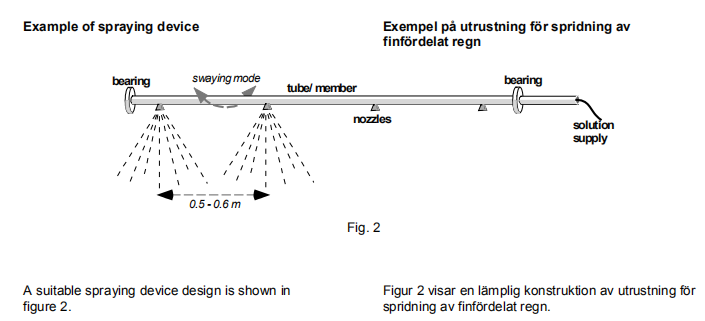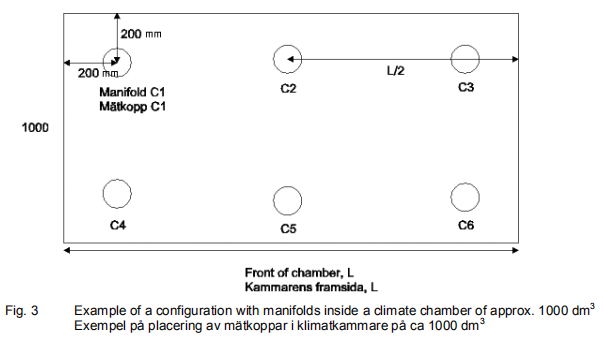Environmental test chambers for standard VOLVO STD 423-0014
This standard defines an accelerated corrosion test method to be used in assessing the corrosion resistance of metals in environments where there is a significant influence of chloride from a marine source or by winter road deicing salt. The standard specifies a test procedure to be used in conducting the accelerated corrosion test to simulate atmospheric corrosion conditions in a controlled way.
This standard need a climatic chamber--salt spray test chamber. In this standard, the term “metal” refers to metallic materials with or without corrosion protection. The accelerated laboratory corrosion test is applicable to:
-- metals and their alloys (ferrous and non-ferrous)
-- metallic coatings
-- chemical conversion coatings
-- organic coatings on metals.
The method is suitable for comparative testing in the optimization of surface treatment systems for test panels, specially designed test objects and components.
The climate chamber shall be designed so that the following test conditions can be obtained, controlled and monitored during the test.
During a period of constant climate conditions, an accuracy of ±3% RH for the mean value in relative humidity shall apply. This corresponds to a minimum temperature accuracy requirement of , in this case, ±0.6℃.
The climate chamber shall be designed so that the relative humidity may be changed with respect to time, from 95%RH to 50%RH within 2h. Figure 1 in section 2.1.1 shows an example of a suitable climate chamber design.
To meet the temperature and humidity accuracy requirements, the climate chamber shall be equipped with an apparatus to provide evenly distributed, efficient air circulation to ensure that the temperature and humidity variations in the chamber are within the started tolerances. Sufficient insulation of the chamber walls and lids is required in order to avoid excessive condensation on these surfaces.
The humidity and temperature levels of the climate chamber during a test cycles shall be continuously monitored. The humidity and temperature sensors should reflect the climate conditions in the actual test area.
For measurements of the relative humidity, use a hygrometer designed for measurements at high humidity levels, e.g. a capacitive sensor which has been conditioned to the relevant level of humidity. For temperature measurements, the use of a resistance temperature sensor is required.


The spraying device shall be capable of producing a finely distributed, uniform spray of salt solution falling on the test objects with a flow corresponding to a downfall of 15 mm/h-5+10mm/h.
Sprayed salt solution must not be reused.
The spraying device shall preferably be made of a number of flat spraying nozzles mounted in series on a rail or tube in such way that their spray patterns partially overlap, see figure 2. A swaying mode of the tube member must be implemented in order to distribute the salt solution uniformly over the test area.
The spraying device should be made of , or lined with , materials resistance to salt solution corrosion. The use of plastic materials is recommended.
If mist if formed during the rain phase, the test chamber must be equipped with a device for evacuating the salt mist directly after spraying.
Should there be a problem with a non-straight upward or downward graph in connection with wetting and dehumidification, respectively, equipment for cleaning should be provided. The equipment must then be equipped with nozzles that can be rotated along the test chamber walls making it possible to perform a cleaning process after each rain phase.
It is important not to expose the test objects to water splashing during this cleaning process.
Example of nozzle type: Spraying Systems Uni Jet 800050VP. The nozzles shall be mounted on the supporting tube with a centre-to-centre distance of 50-60 cm.

After having been sprayed until wet, all test objects shall be air dried from visible wetness in order to regain climate control. The climate chamber shall therefore be equipped with a system for drying with a forced air flow.
Drying shall preferably be arranged by supercooling and reheating an internal circulating flow. Alternatively, drying may be arranged by letting a forced flow of pre-heated ambient air ventilate the chamber. For a climate chamber, an airflow rate of 75-150 l/s×㎡ is recommended. The forced airflow shall not exceed a temperature of 40℃.
The test solution shall have a concentration of 1.0%±0.1%.
The salt shall be of the following quality:
Dry Food-Grade sodium chloride (provided without sodium iodide additions).
The 1% NaCl solution shall be acidified to a PH value of 4.2±0.1 through the addition of sulphuric acid, e.g. 1 ml of 0.5 M H2SO4 to 10 liters of saline solution.
For the salt solution, the conducivity shall be 17mS/cm±2mS/cm.
The deionized water shall have a conductivity of max 10μS/cm measured at 20℃.
Sprayed salt solution must not be reused.
The concentration of the salt solution shall be checked before the solution is brought into the test chamber.
The following methods are proposed:
1. Measuring the correlation between conductivity and salt concentration.
2. Refractometer
The pluviometry shall be checked with the solution defined in section 2.4.
Choose manifolds without collar, or equip them with a funnel(diameter max. 10cm).
The diameter of the manifolds or the funnels shall be known.
Clean, dry and weigh (to within 10-2g) these utensils. Place the manifolds in the testing plane so as to be able to evaluate the homogeneity of the fallen rain quantity. In figure 4, a suggested configuration with manifolds inside a climate chamber is shown.

Condition the chamber during 1h minimum at 35℃, then launch the spray mode and let it operate for 30 min.
Immediately after the end of the spray mode(without subsequent flush phase or rinsing phase), dry the outside of the manifolds and funnels, then weigh them.
Record the difference in mass with respect to the initial mass of the manifold and funnel, and convert it into ml/h, then mm/h, dividing the collected volume by the collecting surface of the manifold or the funnel.
For more details, please feel free to contact sales@lenpure.com
Please visit www.lenpure.com











